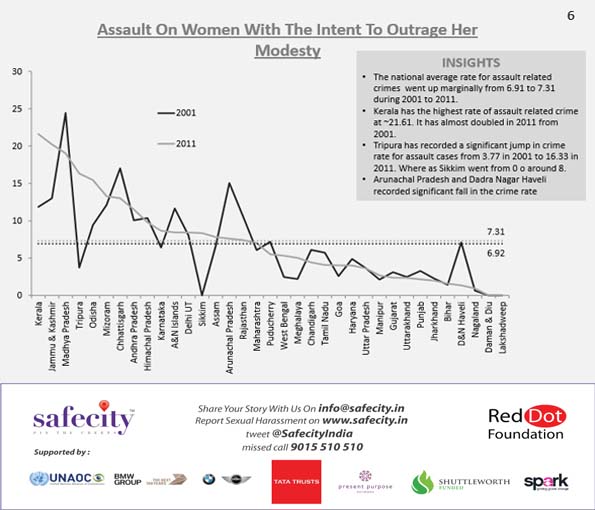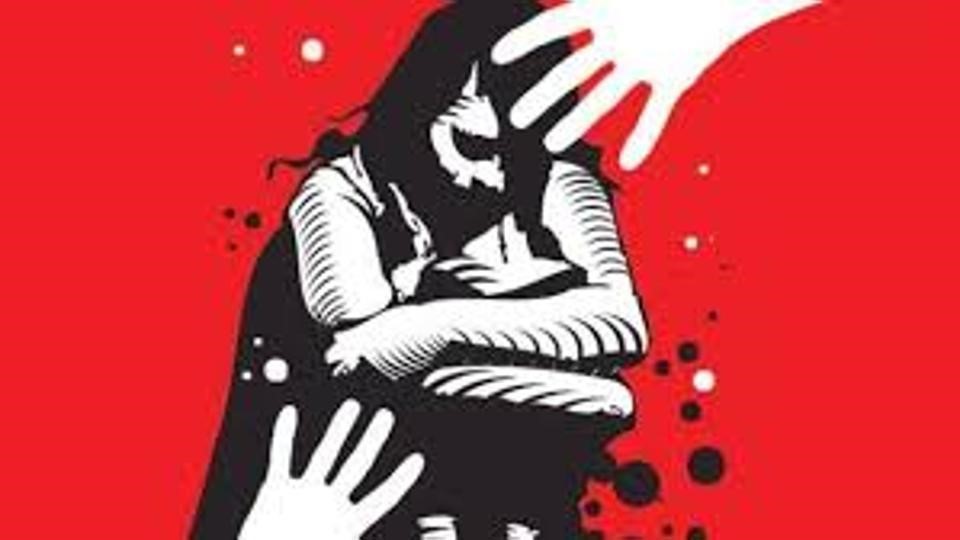The Epidemic of Outraged Modesty

Mudita Gupta, born and brought up in Delhi, strongly believes in the idea of spiritual happiness. When not bogged down with academics, she stays engrossed in fiction and music. She heads a college based live project on rural women entrepreneurship, is always keen to attack gender stereotypes and wishes to contribute to women’s safety immensely.
The Epidemic of Outraged Modesty
Indian patriarchy is strikingly characterised by the act of considering violence as a choice. While the Indian Penal Code had laid down several provisions since 1860 that criminalize assaults against women, 2007 became the golden year in which The Supreme Court of India finally defined what constitutes a woman’s ‘modesty’ when outraged. “The essence of a woman’s modesty is her sex.”
A demographic comparison between 2001 and 2011 reports a steady increase in the rate of crimes with the intent to outrage a woman’s modesty. Although there has been a parallel growth in the level of awareness and the concept of feminism, several factors have contributed to the current state of lack of safety such as, limited female police force and the sluggish judicial system. But what comes across as most prominent is the deep rooted bias against women.
Why gender based violence doesn’t seem to end is because we are not really targeting the problem. Unsurprisingly, the law represents the mind-set of the people- patriarchal and immoral. They look good on paper but in reality, it is absurd that we are more concerned about protecting the modesty of a woman than the woman herself. What we do by limiting the scope of criminalization to a woman’s modesty is encourage every other act of utter disrespect towards her. Moreover, modesty continues to be trivialized, thereby perpetuating the belief that it is okay to neglect a woman’s choice, that consent is just another word, that a man’s need or impulse is supreme. Our social structure has become a battleground for dominance through victim blaming, passive acceptance and stigma. In essence, any form of liberation for women, if granted, might risk the stability of their instituted pedestal.
It is important to view it as a sexual politics of sorts, where those in power can go and have gone to any extent to protect their interests. Systematic reinforcement of patriarchy has made it impossible to free women from the fear of being assaulted just about anywhere; because, in the words of Mr. Mulayam Singh Yadav, “boys will be boys and they make mistakes”. What adds to this fear is an inherent distrust for legislation and judiciary.
The sad and rather shameful state of affairs is that there is an outright refusal to perceive a crime from a woman’s perspective. Something as physically distant as staring at a woman lewdly in the streets is an act of outraging her modesty, with no legal consequences whatsoever. With no measures to prevent marital rape, it is not surprising that the perpetrator of sexual violence that severely attacks modesty of the victim is the husband of the victim in 97.7% of the cases, as reported by the National Family Health Survey in 2014. In several incidents regarding outrage of a woman’s modesty, the victim’s reaction is given more importance than ethics, morals and logic. A six-year old girl, for instance, when sexually assaulted, might not even understand the situation correctly. But this is misinterpreted for lack of development of a sense of modesty, and that’s how the accused walks free.
Umpteen cases of gender based violence have brought home the fact that the intention behind most crimes against a woman is to outrage her modesty, to thrash any leftovers of the element of ‘dignity’ which somehow is believed to be inversely related to the non-consensual use of her body and to establish a relationship of the oppressor and the oppressed. This might, in part, stem from the misrepresented idea of masculinity that requires socio-psychological power dynamics. Therefore, what needs to be attacked is not the clothing of the victim or her existence in general, but the very mind-set that encourages treating women as sexual objects.
Opinions are of the writer.



